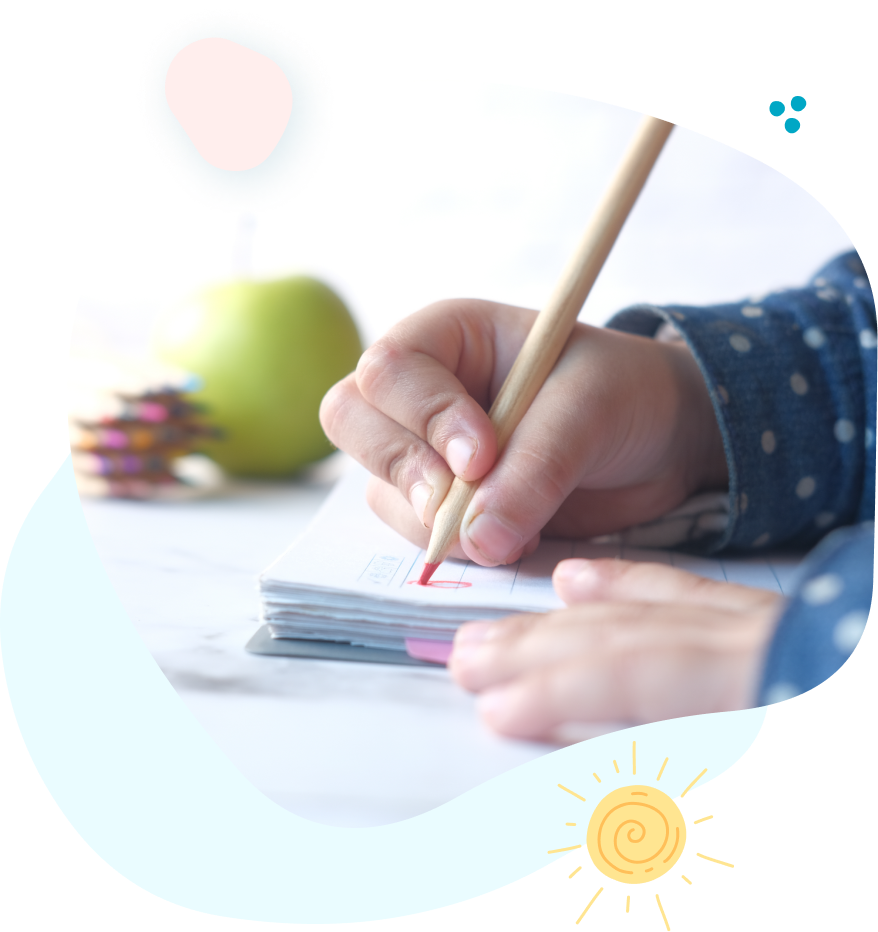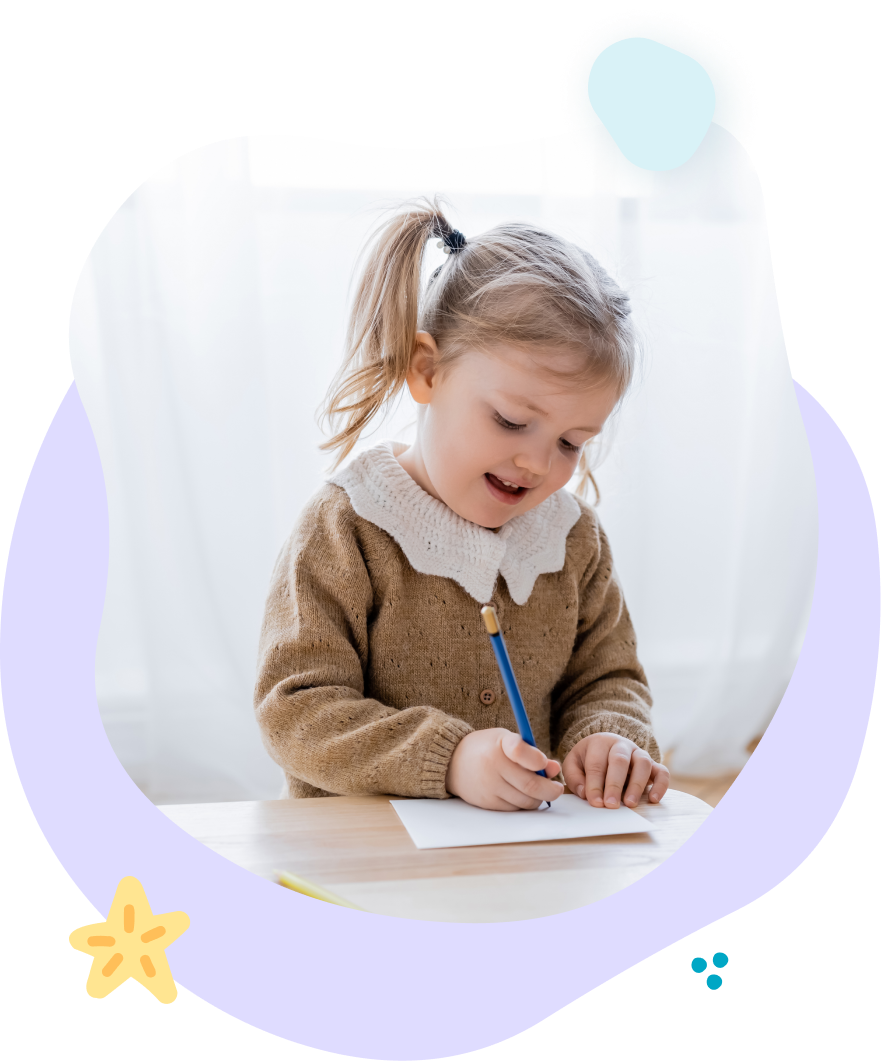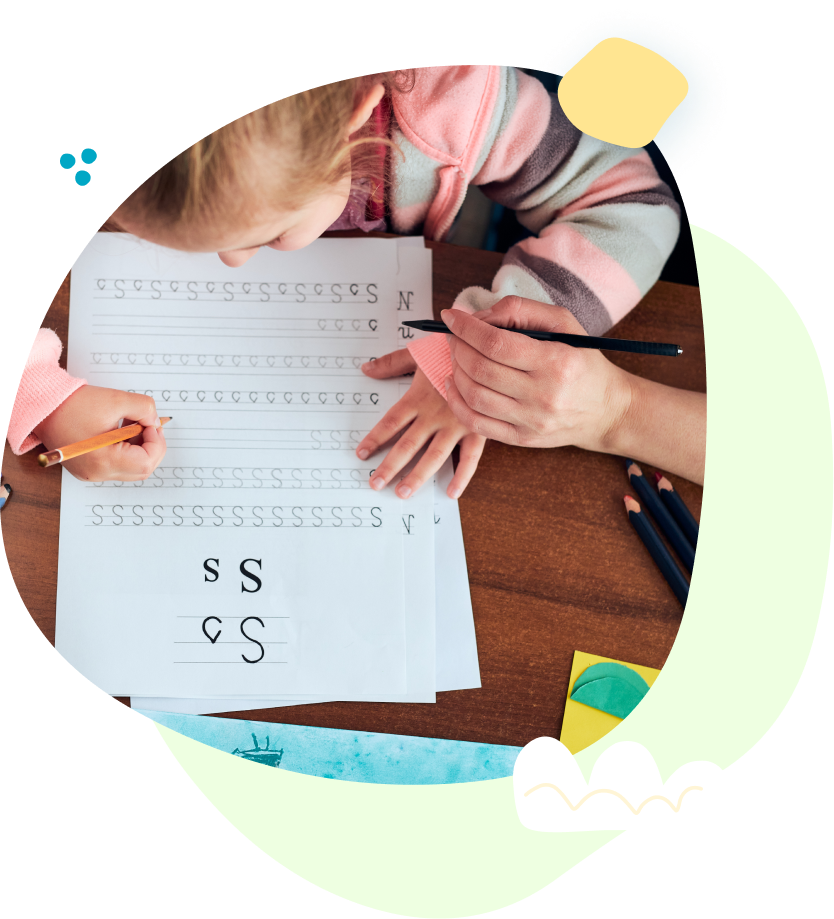Your Clinic
SET A LOCATION
Your Clinic
SET A LOCATION
Dysgraphia is a learning disability that affects writing skills in children, making it difficult to produce legible handwriting, spell correctly, and organize written thoughts. For many children, writing is essential for expressing themselves and participating in school activities. When a child struggles with dysgraphia, it can impact their academic success, confidence, and social interactions.
Common symptoms of dysgraphia in children include:
Poor handwriting and inconsistent letter formation.
Spelling difficulties and poor spacing of words.
Slower-than-average writing speed.
Difficulty structuring ideas in written form.

Progressive Pediatric Therapy provides targeted tools specifically designed to help children overcome handwriting difficulties. Our evidence-based interventions address the motor, visual, and cognitive components of written expression.


Helps students master legible and fluent handwriting through a hands-on curriculum that complements Occupational Therapy with visual, tactile, auditory, and kinesthetic activities. This evidence-based program uses developmentally appropriate methods to teach children proper letter formation, spacing, and writing fluency through multisensory approaches.
Korro AI is an innovative platform revolutionizing occupational therapy with artificial intelligence. Designed to streamline therapy planning and enhance patient outcomes, Korro AI empowers therapists with data-driven insights, automated progress tracking, and personalized treatment recommendations. This cutting-edge technology helps optimize therapy sessions and provides objective measurements of progress.
Children with dysgraphia often experience challenges beyond just writing:
Difficulty completing written assignments, taking notes, and participating in writing-heavy subjects.
Increased frustration, anxiety, and lower self-esteem due to difficulties with written tasks.
Dysgraphia is often linked with other learning differences such as ADHD or dyslexia.

Occupational therapy (OT) plays a critical role in managing dysgraphia by improving a child’s fine motor skills, coordination, and sensory processing. Here’s how OT can help:
Occupational therapists focus on enhancing fine motor skills to make handwriting more legible and efficient. This often includes exercises that develop proper grip, hand strength, and writing posture. Handwriting without Tears program is often used to help support children with dysgraphia.
Children may benefit from tools like pencil grips, lined paper, or slant boards to help with their writing. These tools reduce strain and enhance control, making writing tasks easier.
Activities like stringing beads, finger tracing, and clay molding can build the motor skills necessary for writing. Therapists often incorporate fun tasks to engage children while building strength and coordination.
Therapists address sensory issues that impact writing, helping children with spatial awareness, pressure control, and overall hand movements.
Progressive Pediatric Therapy offers a 10-Week Cursive and Print Handwriting Instruction Program using the Handwriting Without Tears® curriculum. This intensive program (20 sessions over 10 weeks) uses multisensory strategies to help children with dysgraphia develop confident, legible writing skills.
Cursive Handwriting (ages 6+): Smooth connections and fluid writing style
Print Handwriting (ages 4+): Letter formation, spacing, and pencil grip
All participants complete a pre-program consultation to ensure readiness. This specialized program complements our occupational and speech therapy services for comprehensive dysgraphia support.
Speech-language pathologists (SLPs) also play an essential role in helping children with dysgraphia. While OT focuses on motor skills, speech therapy targets the language and cognitive aspects of writing.
Here’s what SLPs do:
Children with dysgraphia may struggle to express themselves in writing. SLPs help them learn to organize thoughts, structure sentences, and create logical written content.
Building a strong vocabulary and understanding grammar rules improves writing clarity and fluency. SLPs focus on word choice, sentence complexity, and coherence.
Strong verbal skills often translate into better written communication. Speech therapy includes oral exercises that enhance a child’s ability to form coherent thoughts and communicate clearly.

Parents play a key role in helping children with dysgraphia overcome challenges. Here are some practical tips:
Encourage creative writing, journaling, or drawing activities to make practice enjoyable.
Consider using voice-to-text tools, typing programs, or other assistive technology to reduce frustration with handwriting.
Celebrate every milestone and provide a positive environment for writing practice.
Combining occupational and speech therapy provides comprehensive support for children with dysgraphia.
Here’s how this integrated approach works:
A holistic approach targets both the physical aspects of writing and the language skills needed for effective communication.
For example, children may practice writing while verbalizing their thoughts, improving both fine motor skills and language expression simultaneously.
This collaborative approach ensures that children receive tailored interventions, leading to measurable improvements in writing, self-confidence, and overall communication.
Dysgraphia can create significant obstacles in a child’s life, but with targeted support from occupational and speech therapy, children can develop stronger writing skills, greater confidence, and improved academic performance. Early intervention is key to helping children with dysgraphia thrive. Contact us today to learn more about how our therapies can transform your child’s experience with writing.
We empower children, families, and the community to learn, grow, and celebrate every child's unique abilities.
Quick Links
Contact Details
Phone: 561-376-2573 | 561-918-0190
Fax: 561-218-4939
VIP Concierge: 561-717-1764
Clinic Locations
All Rights Reserved | Progressive Pediatric Therapy, Inc. | Privacy Policy | Terms of Service
Site by Spearlance